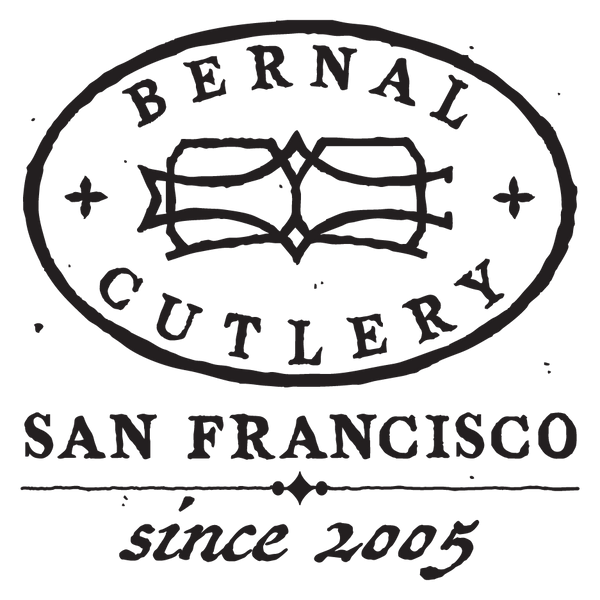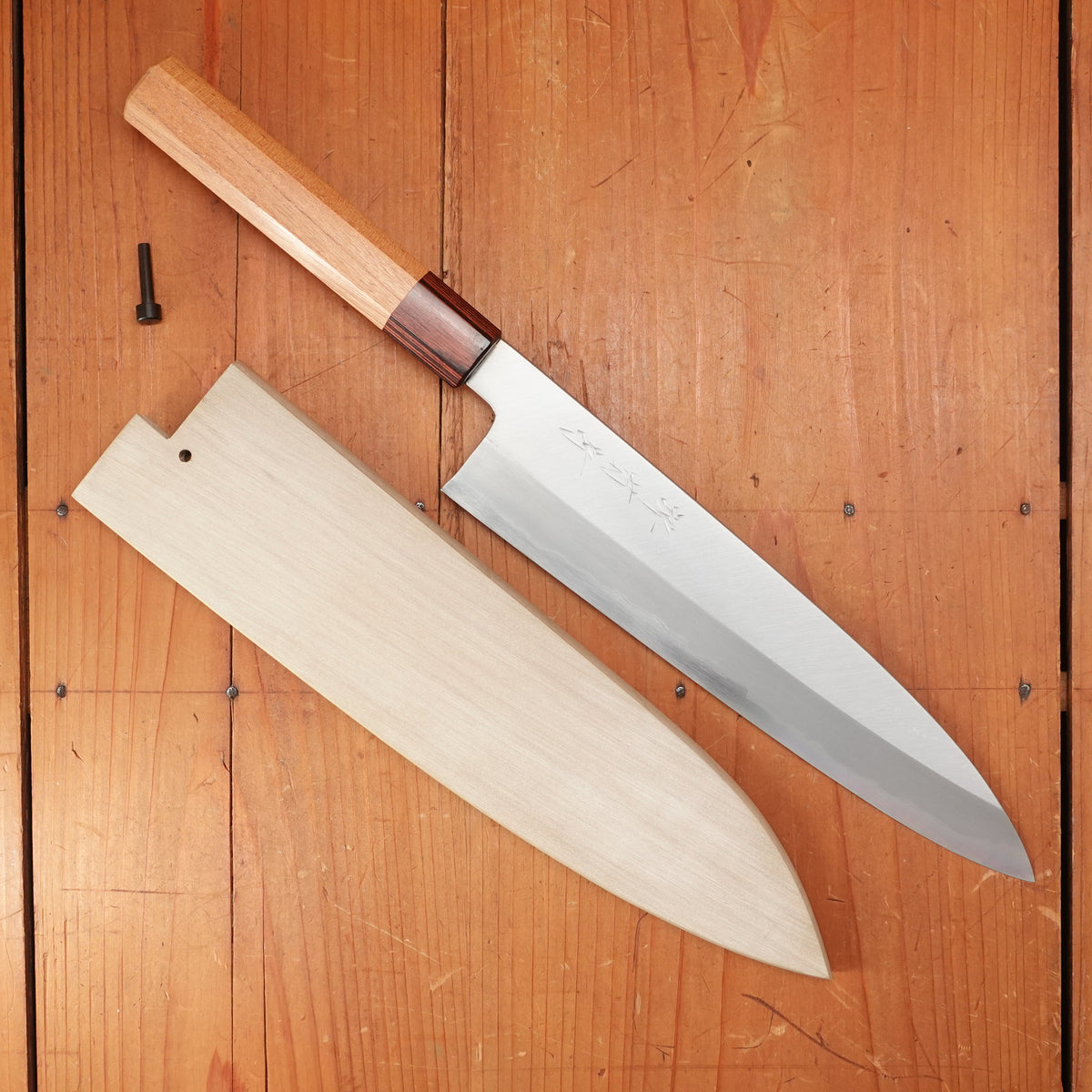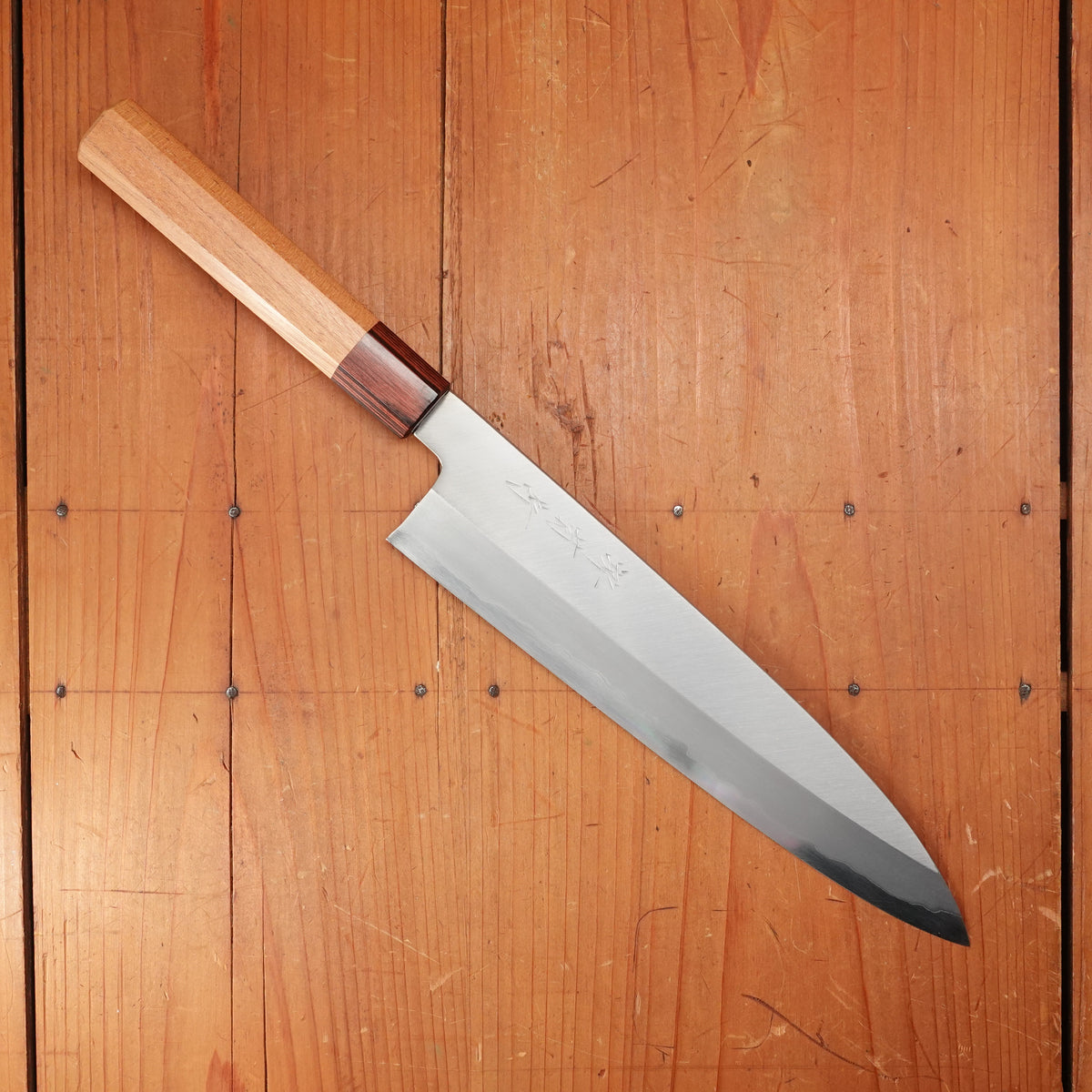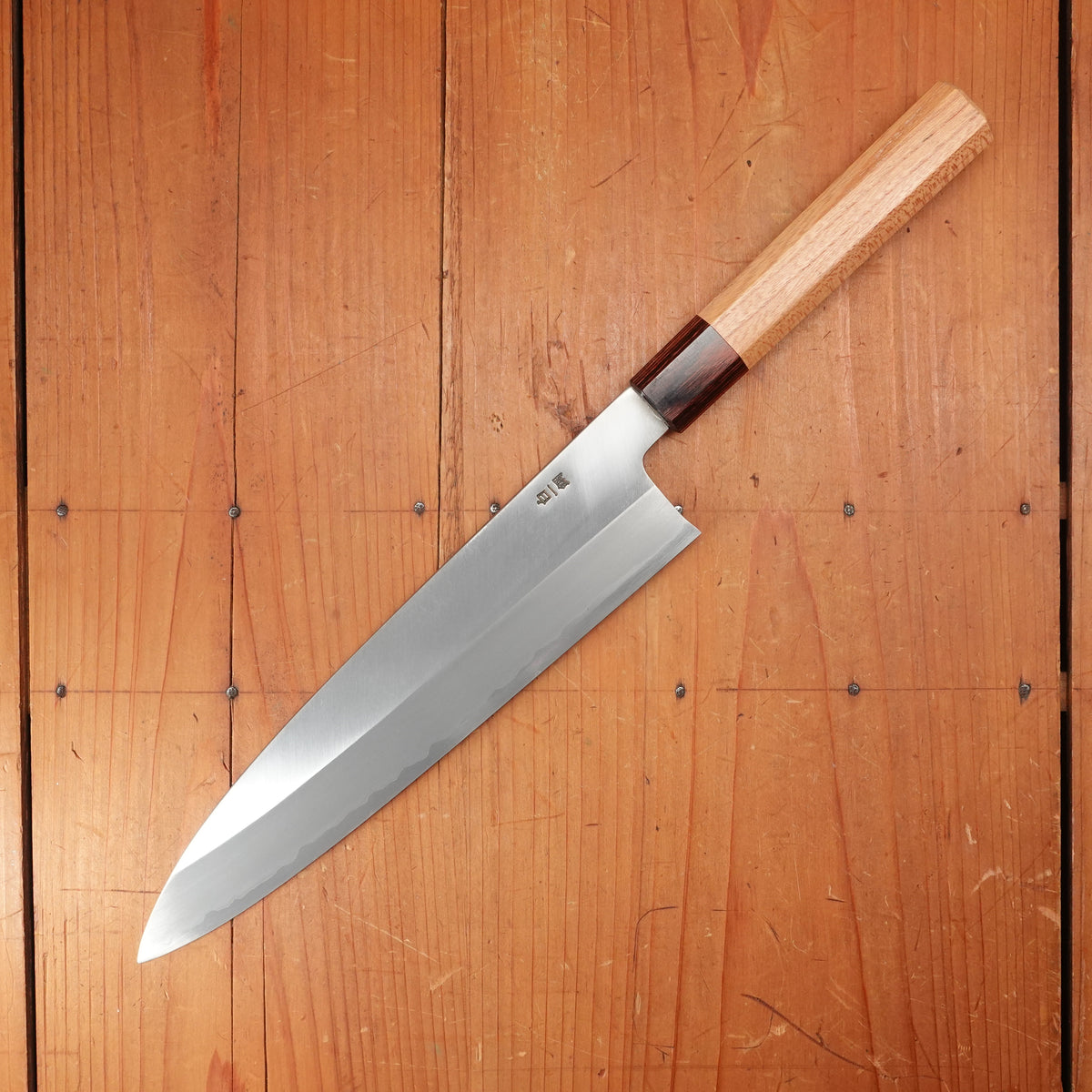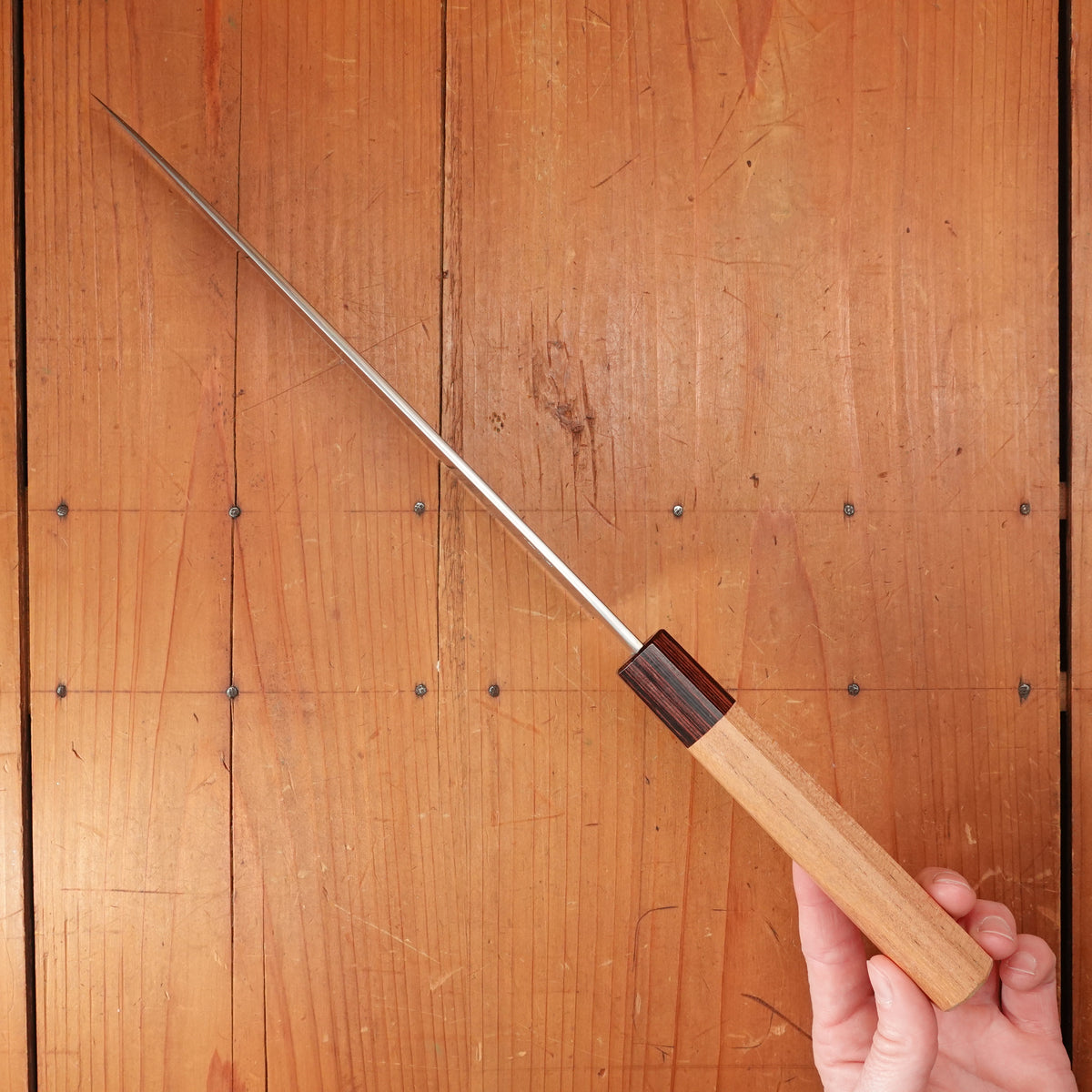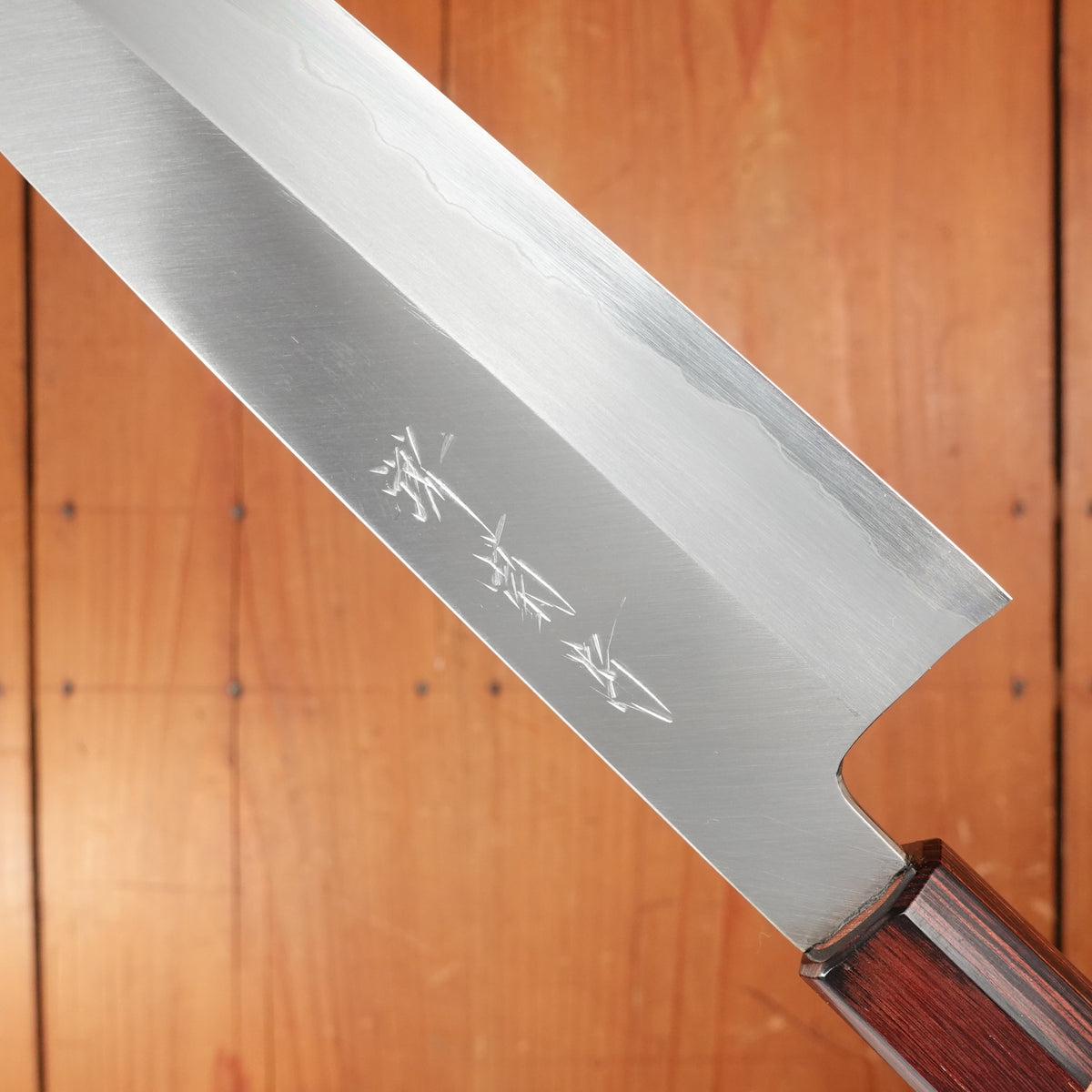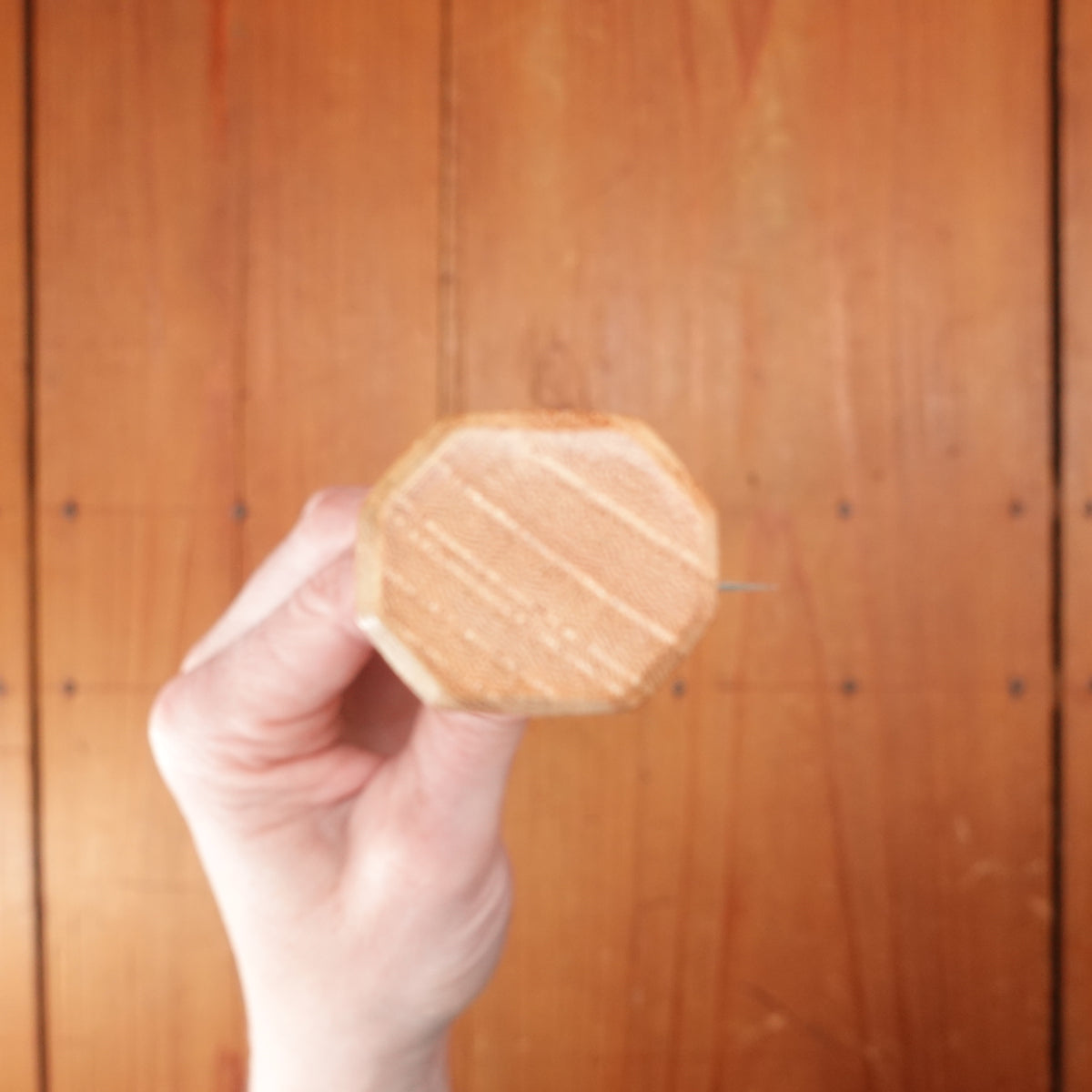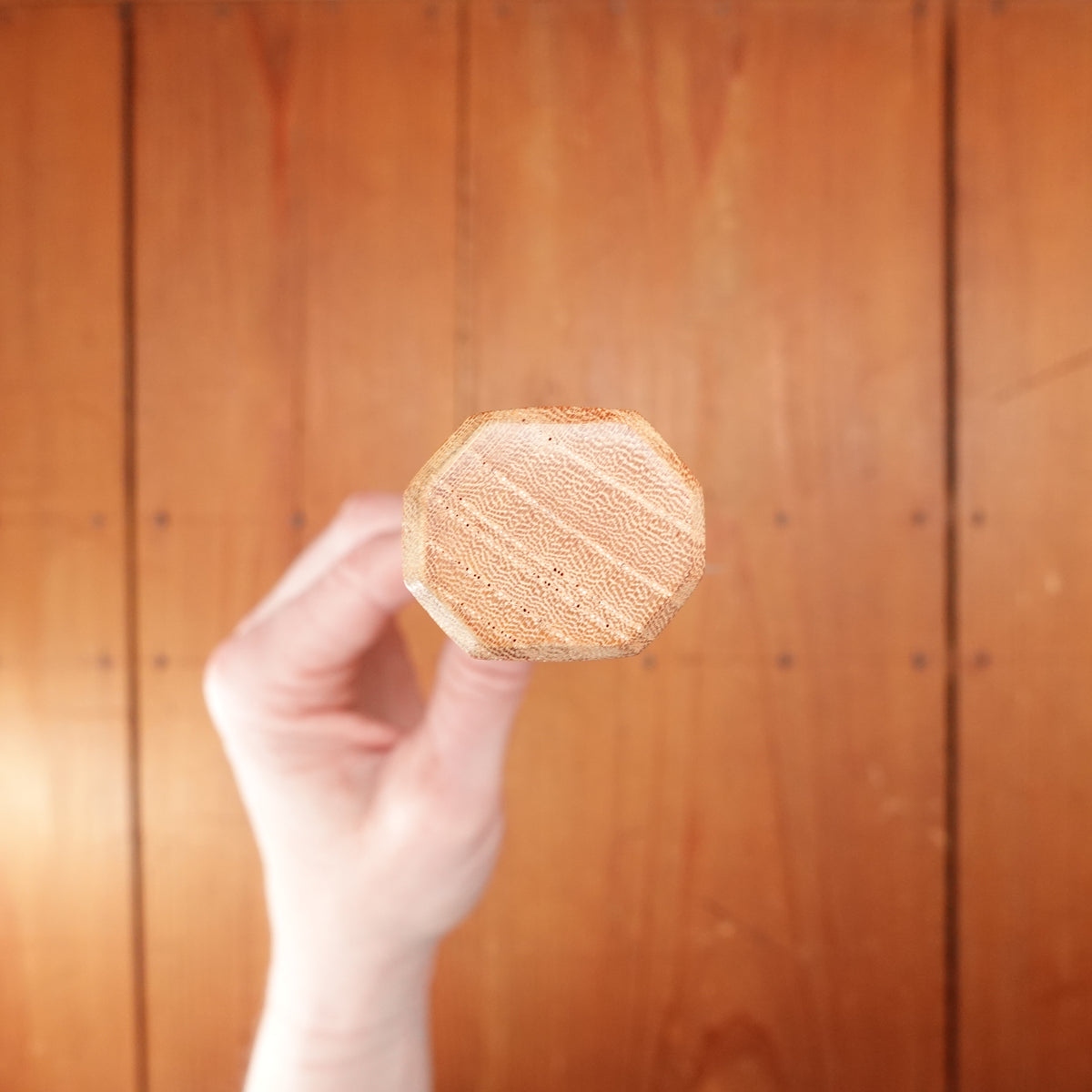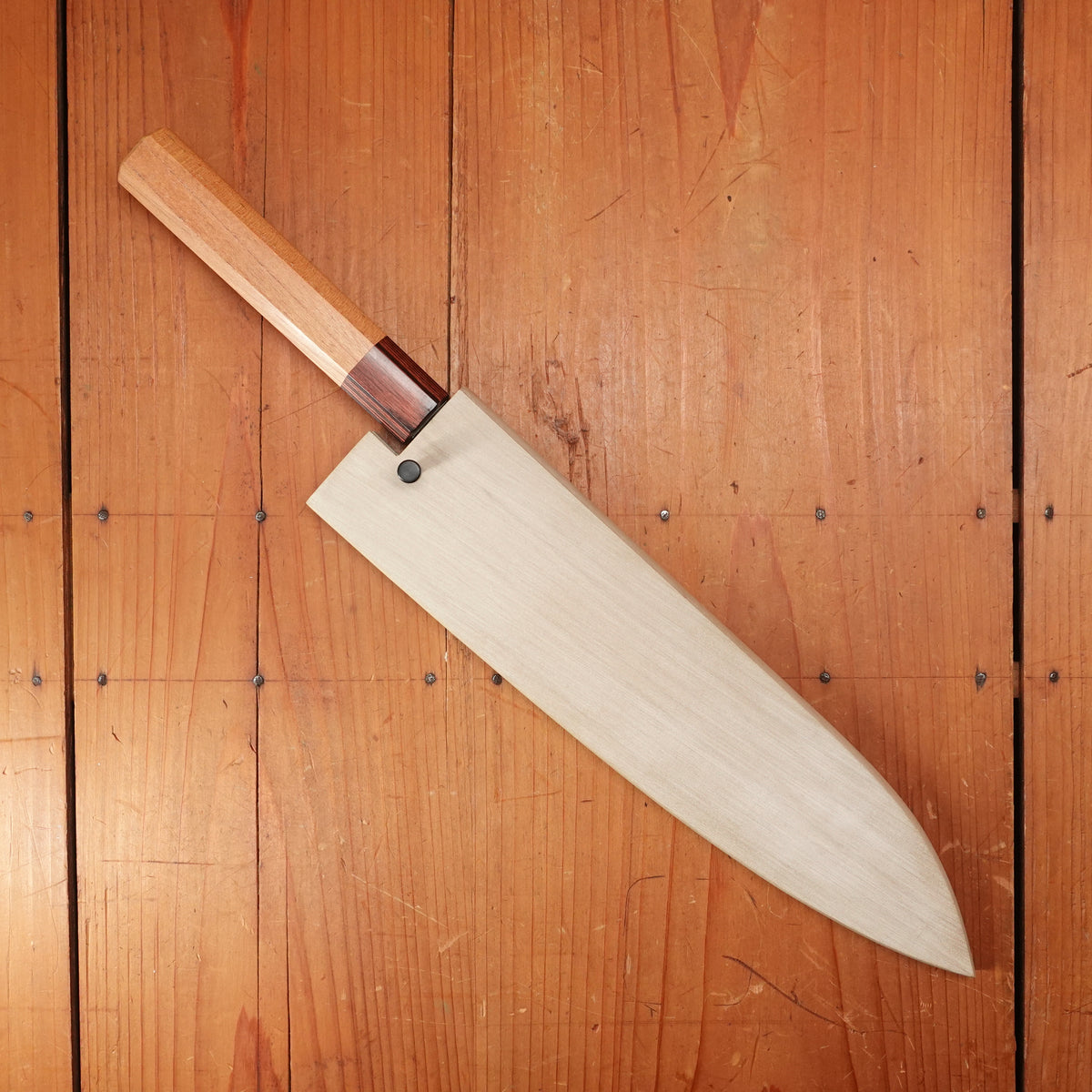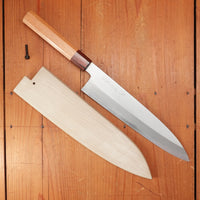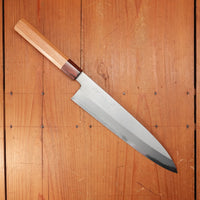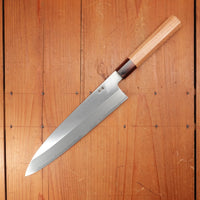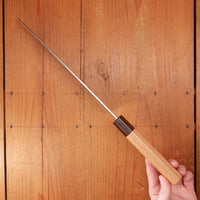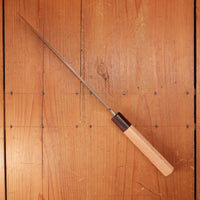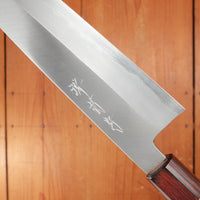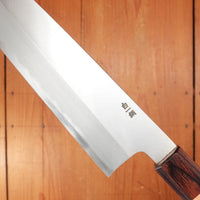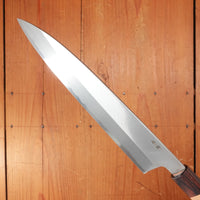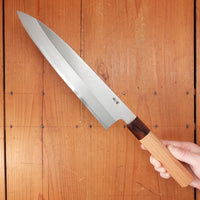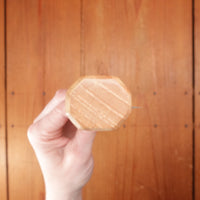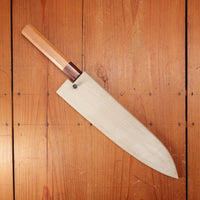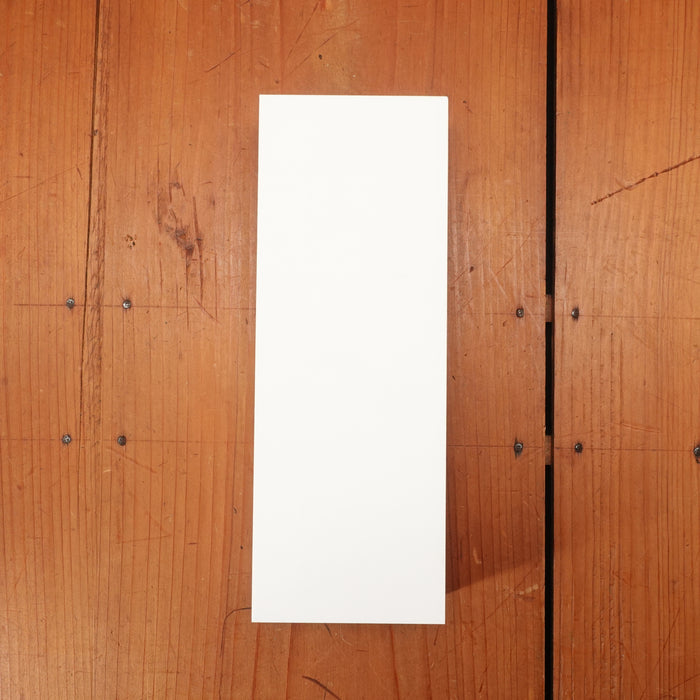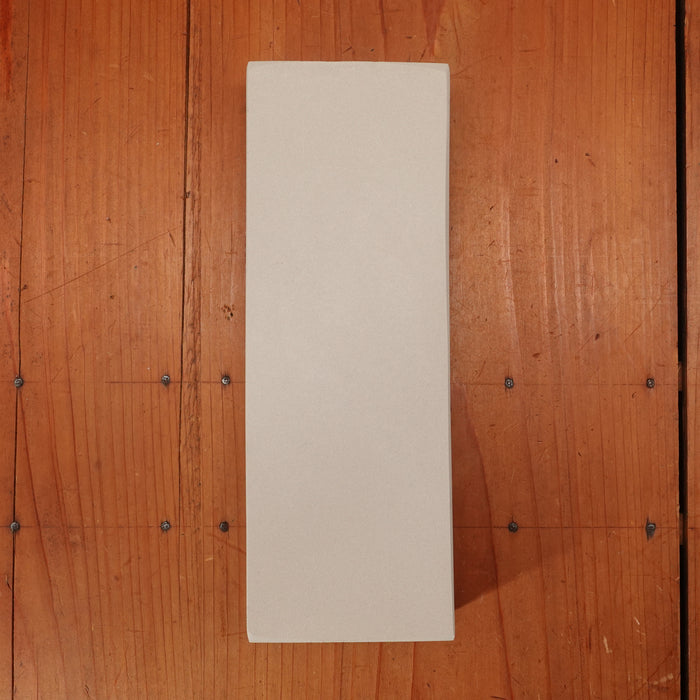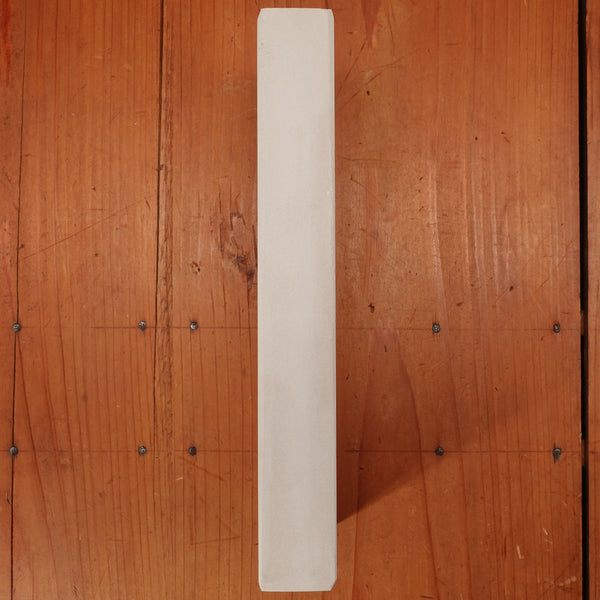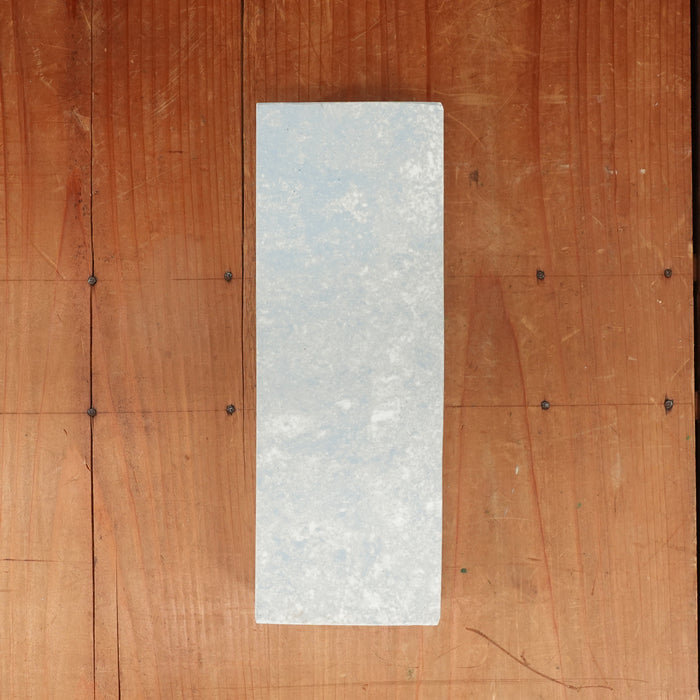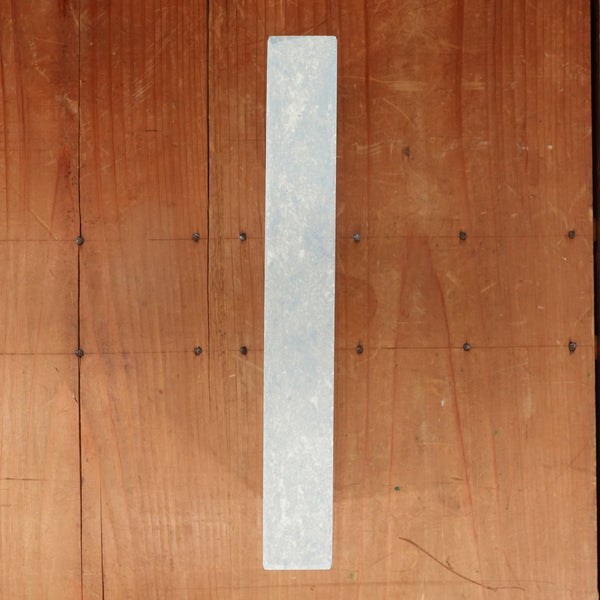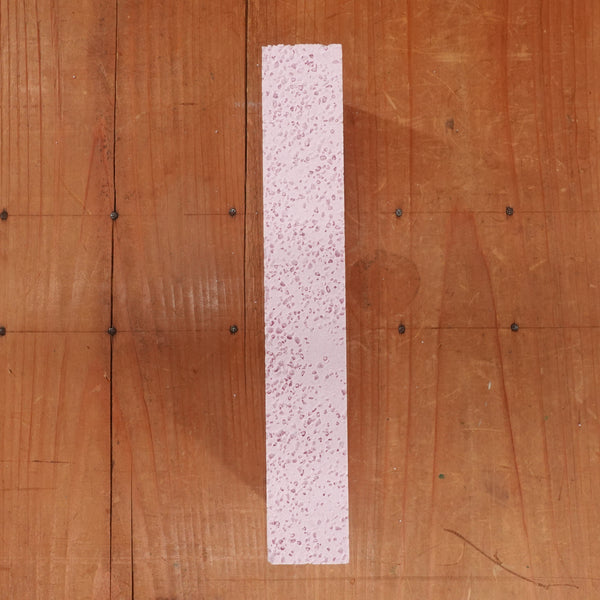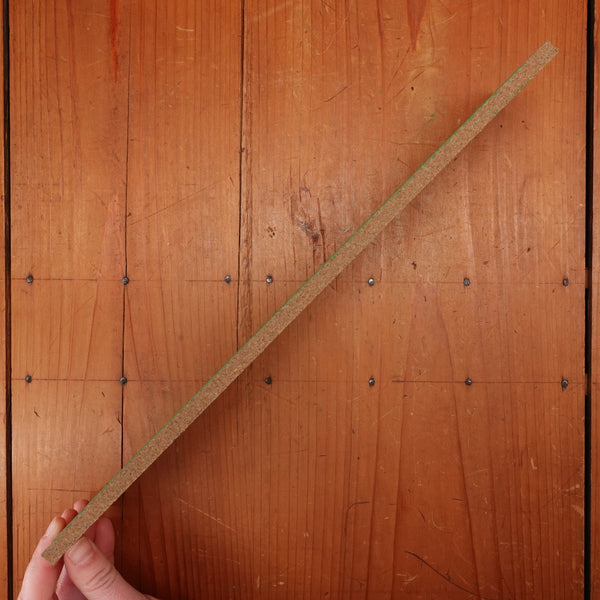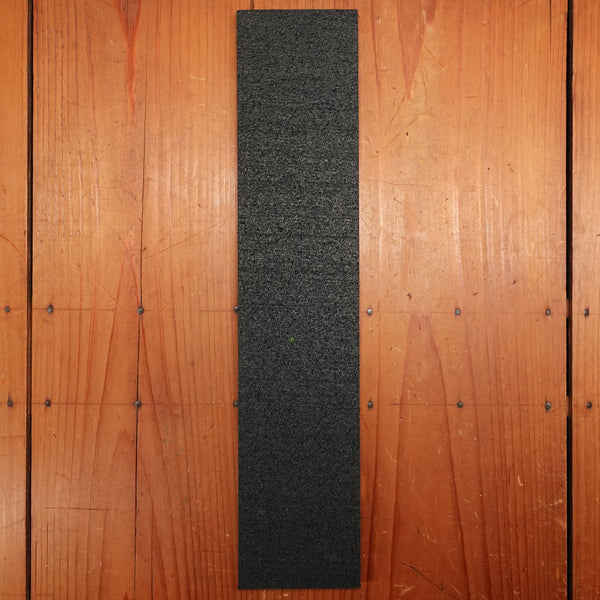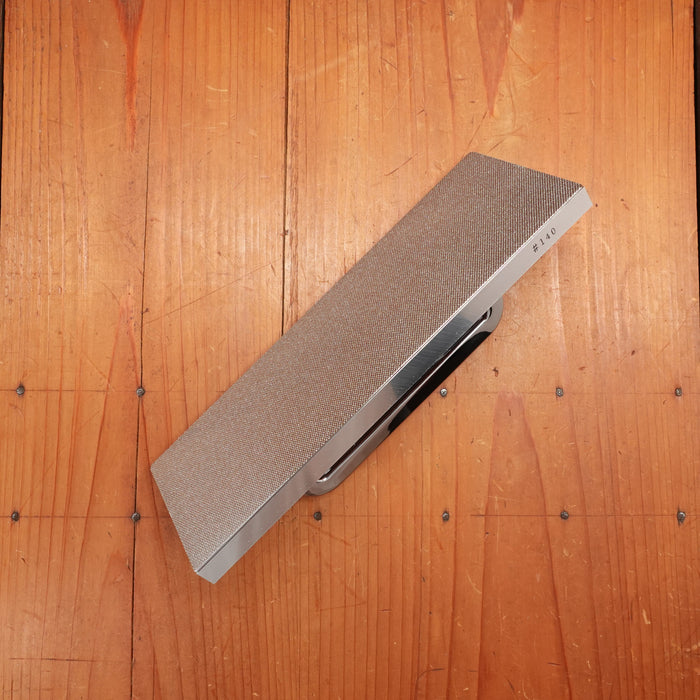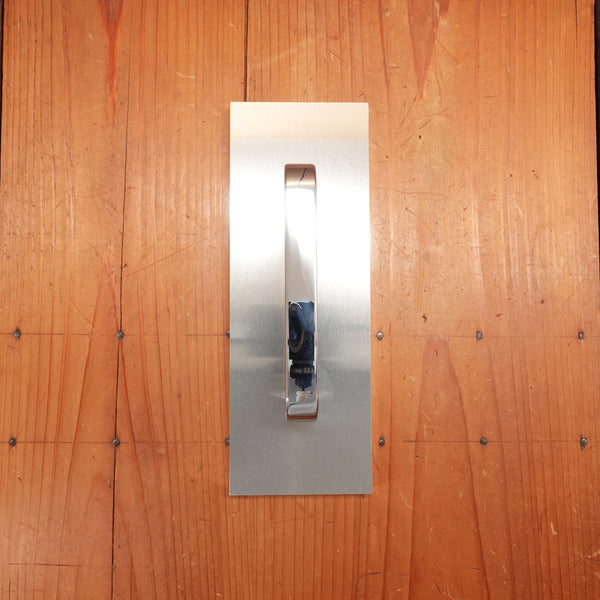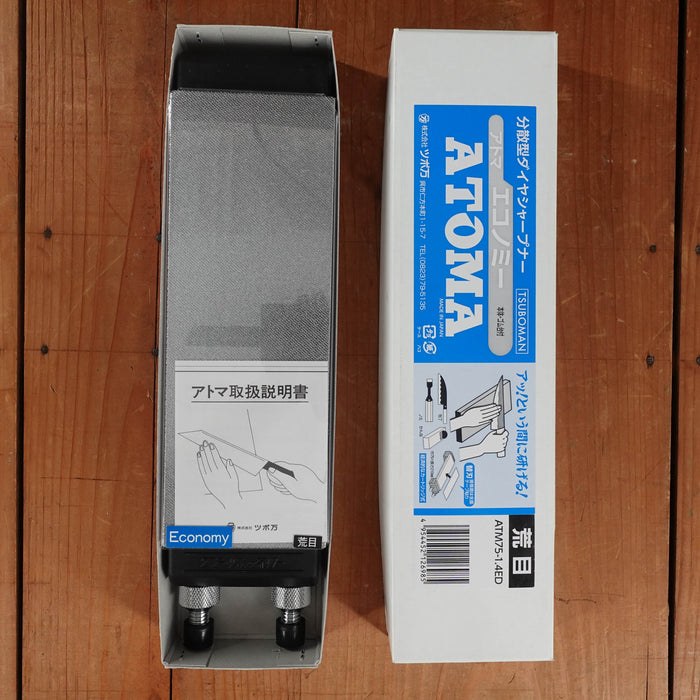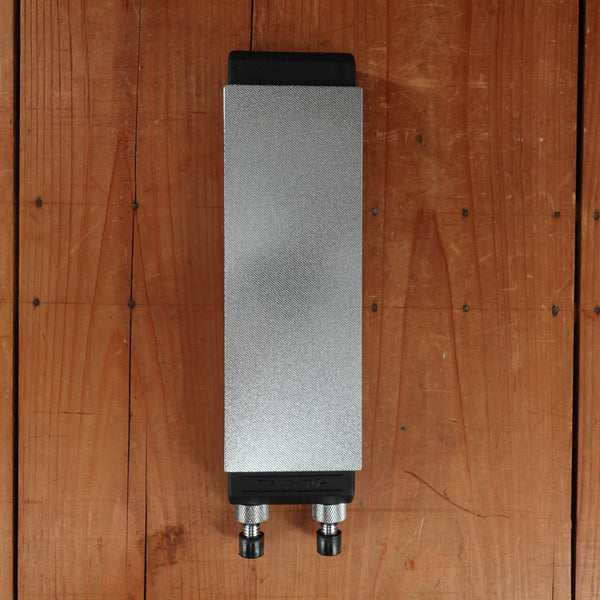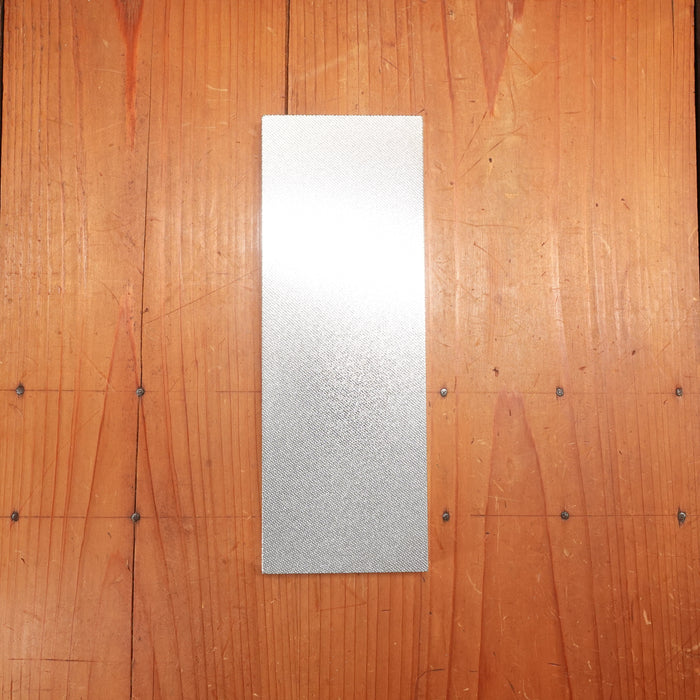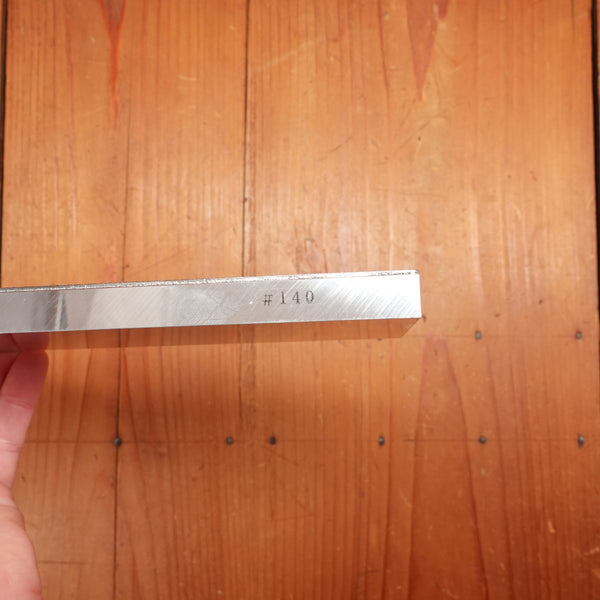Sakai Kikumori Nakagawa 240mm Gyuto Stainless Clad Shirogami 1 Keyaki with Saya
-
Regular Price
-
€378,68
-
Sale Price
-
€378,68
-
Regular Price
-
Sold Out
-
Unit Price
- per
- Regular Price
- €378,68
- Sale Price
- €378,68
- Regular Price
- Unit Price
- per
These hand forged knives are made with a stainless-clad shirogami 1 carbon steel core with a migaki finish. They're fitted with an octagonal keyaki (zelkova) handle and pakka wood ferrule. The dimensions and geometry of this knife were made to our specifications and are exclusive between Sakai Kikumori, Nakagawa Hamono and Bernal Cutlery.
This is an ideal work knife, highlighting some of the best forging out there with wide-beveled, migaki finish grinding done with superb geometry in mind.



Listed Length: 210mm
Total Length: 380mm
Edge Length: 231mm
Heel Height: 49mm
Spine Thickness: 2.76mm
Weight:
Orientation: Ambidextrous
Blade Type: Stainless Clad Carbon Steel
Steel Type: Shirogami 1 (White Paper #1)
Steel Hardness (HRC): 63-64
Maintenance: Some Attention
Handle Type: Japanese (wa)
Handle Material: Keyaki and Pakka Ferrule
Dive Deeper
Medium-Fine finish - Japanese
Sharpening Supplies
Stones & Accessories selected specifically for this knife.
Bernal Cutlery Takarazukushi 320 WA/800 Cobalt Combination Grit Japanese Whetstone
- Regular Price
- €71,06
- Sale Price
- €71,06
- Regular Price
-
- Unit Price
- per
Bernal Cutlery Takarazukushi 500 Grit Soft & Fast Ceramic Japanese Whetstone
- Regular Price
- €39,86
- Sale Price
- €39,86
- Regular Price
-
- Unit Price
- per
Bernal Cutlery Takarazukushi 1200 Grit Blue Marble Semi-Soft Ceramic Japanese Whetstone
- Regular Price
- €64,12
- Sale Price
- €64,12
- Regular Price
-
- Unit Price
- per
Takarazukushi Porous Ceramic 220 Flattening Stone
- Regular Price
- €34,66
- Sale Price
- €34,66
- Regular Price
-
- Unit Price
- per
Bernal Cutlery Monodiachrome™ Precharged Deburring Strop
- Regular Price
- €34,66
- Sale Price
- €34,66
- Regular Price
-
- Unit Price
- per
Bernal Cutlery Monodiachrome Precharged Microfiber Strop
- Regular Price
- €64,99
- Sale Price
- €64,99
- Regular Price
-
- Unit Price
- per
Bernal Cutlery Vanadium Carbide Precharged Abrasive Strop
- Regular Price
- €30,33
- Sale Price
- €30,33
- Regular Price
-
- Unit Price
- per
Atoma #140 Diamond Stone With Handle
- Regular Price
- €112,65
- Sale Price
- €112,65
- Regular Price
-
- Unit Price
- per
Atoma #140 Diamond Stone with Holder
- Regular Price
- €110,92
- Sale Price
- €110,92
- Regular Price
-
- Unit Price
- per
Atoma #140 Diamond Stone No Holder
- Regular Price
- €90,99
- Sale Price
- €90,99
- Regular Price
-
- Unit Price
- per
Shirogami 1 (White Paper #1)

